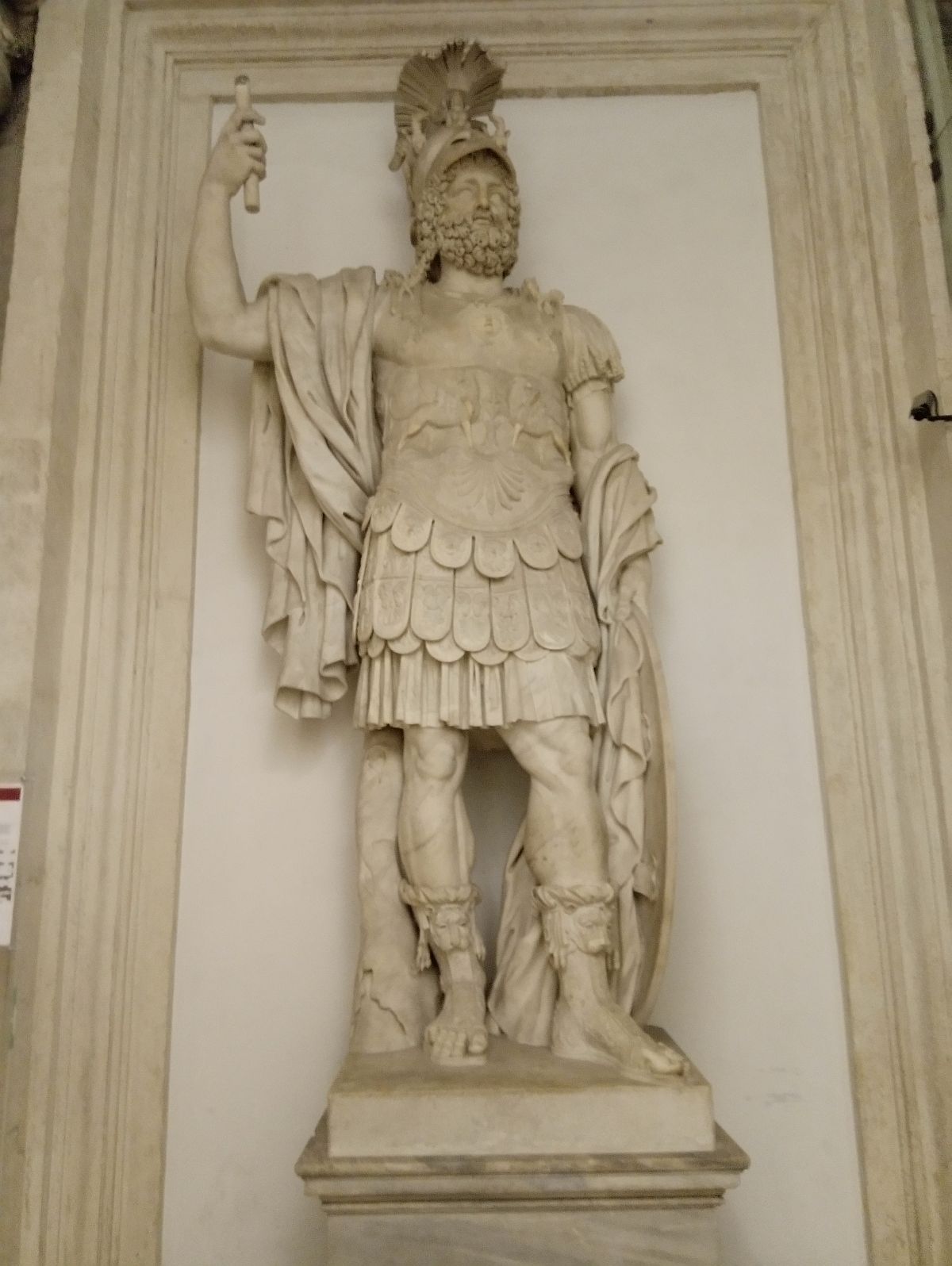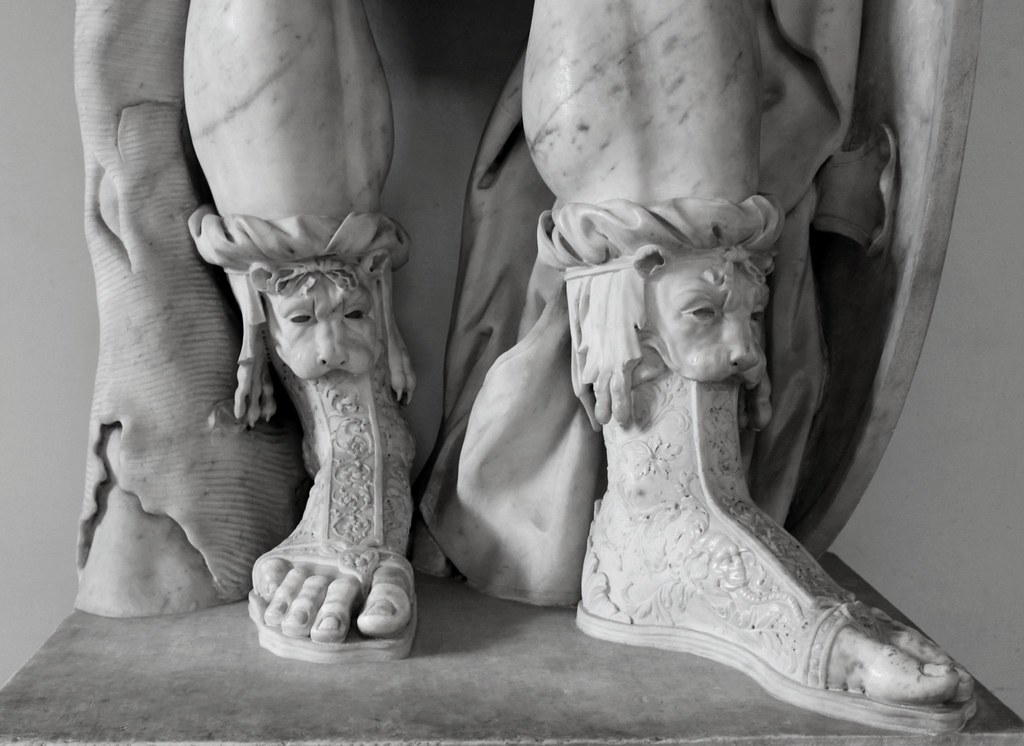Introduction
The Colossal Statue of Mars, housed in the Capitoline Museums in Rome, stands as an extraordinary example of Roman sculptural achievement. Often identified as Pyrrhus, an ancient Greek general, this statue dates back to the 2nd century AD. More than just an impressive work of art, the statue serves as a symbol of the might, culture, and religious devotion of ancient Rome.

Mastery of Roman Sculptors
The craftsmanship of the Colossal Statue of Mars reveals the astonishing skill of Roman sculptors. Standing at an imposing height, the figure radiates strength and authority. Every feature, from the well-defined musculature to the stern, focused expression of the god, highlights the attention to detail that was characteristic of Roman art. The Romans not only excelled in capturing human anatomy but also infused their works with symbolic meaning, using art as a way to project power and ideology.
The Intricate “Calcei of Mars”
One of the most notable details is the “Calcei of Mars”, the beautifully crafted footwear that showcases ornate designs. These shoes, likely worn by Roman military leaders or gods, are decorated with intricate patterns that elevate a functional item into an art form. The Calcei offer a glimpse into Roman fashion, where even utilitarian objects reflected luxury and status, especially in military contexts. Such detail in the footwear speaks to the dual importance of utility and elegance in Roman culture, even in war.
Mars: Symbol of Roman Power
The statue of Mars, the Roman god of war, is not just a representation of divine power but a reflection of Roman society’s deep-rooted militarism. Mars was central to Rome’s identity, worshipped as a god who guided the Roman people to victory. As the father of Romulus, Rome’s legendary founder, Mars was more than a war deity; he symbolized the origin and destiny of the Roman people.
This colossal figure likely held both a decorative and symbolic role in its original context, projecting the strength of Rome’s military might. The grandeur of the statue emphasized Rome’s dominance in the ancient world, reinforcing Mars’ position as a protector of the Roman state and its military power.
Pyrrhus: An Alternative Interpretation
While traditionally associated with Mars, the statue is sometimes identified as Pyrrhus, the Greek general who famously fought against the Roman Republic during the Pyrrhic Wars. This alternate identification adds a layer of historical intrigue to the statue. If it is indeed Pyrrhus, it may symbolize Rome’s ultimate victory over one of its most formidable early adversaries, solidifying Rome’s status as a rising power in the Mediterranean.

Artistic and Cultural Legacy
The Colossal Statue of Mars stands not just as a relic of the past but as an embodiment of Rome’s artistic and cultural legacy. It combines mythology, history, and artistic mastery, encapsulating the grandeur of the Roman Empire at its height. Whether seen as Mars or Pyrrhus, the statue remains a powerful testament to the values, religious beliefs, and artistic genius of ancient Rome.
The Capitoline Museums continue to preserve this iconic piece, allowing visitors to connect with a pivotal period in history when art was not merely decorative but a profound reflection of societal values.
Conclusion
The Colossal Statue of Mars (Pyrrhus) offers a window into the world of ancient Rome, where art was deeply intertwined with power and culture. Through its breathtaking craftsmanship and profound symbolism, the statue continues to captivate and inspire, standing as a lasting reminder of Rome’s enduring influence on history and art.

